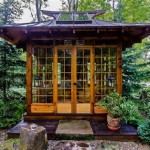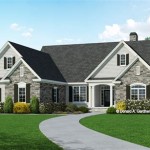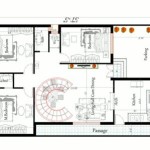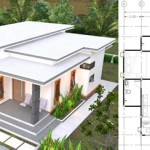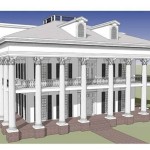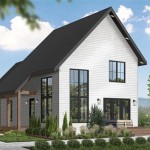Most Economical 3 Bedroom House Plans
The pursuit of affordable housing often leads to a focus on optimizing space and minimizing construction costs. Three-bedroom house plans represent a popular choice for families and individuals seeking a balance between functionality and financial sensibility. Selecting the right plan can significantly impact the overall cost of construction and long-term maintenance. This article explores key considerations and design principles that contribute to the creation of economical three-bedroom house plans.
Economic viability in house design is multifaceted. It encompasses not only the initial construction budget but also factors such as energy efficiency, material selection, and the potential for future modifications. A well-designed economical three-bedroom house plan prioritizes simplicity, efficient use of space, and minimizes waste during construction. By carefully considering these elements, homeowners can achieve their housing goals without incurring unnecessary financial burdens.
A crucial aspect of designing an economical house plan is understanding the local building codes and regulations. These regulations can influence the choice of materials, construction methods, and overall design. Adherence to these codes is not only mandatory but also contributes to the long-term safety and durability of the structure, preventing costly repairs in the future.
Prioritizing Simple and Efficient Design
The foundation of an economical three-bedroom house plan lies in simplicity of design. Complex architectural features, intricate rooflines, and unnecessary ornamentation significantly increase construction costs. A rectangular or square floor plan is generally the most cost-effective option, as it minimizes the amount of exterior wall required for a given square footage. This reduces material costs and labor time.
Efficient use of space is paramount in smaller homes. Open floor plans, where the living room, dining area, and kitchen flow seamlessly into one another, can create a sense of spaciousness and eliminate the need for unnecessary walls. This approach not only reduces construction costs but also enhances natural light and ventilation throughout the home. Carefully planned layouts are critical to economical design; hallways and other transitional spaces should be minimized to maximize livable area.
Consideration should be given to the placement of bedrooms and bathrooms. Grouping these rooms together around a central hallway can streamline plumbing and electrical work, further reducing construction costs. This also simplifies future maintenance and repairs, potentially saving money over the long term.
Optimizing Material Selection and Construction Techniques
The choice of building materials has a significant impact on the overall cost of a house. Locally sourced materials are often more affordable than imported options, and can also reduce transportation costs and environmental impact. Common framing materials include wood, steel, and concrete. Each material has its own set of advantages and disadvantages in terms of cost, durability, and energy efficiency.
Engineered wood products, such as oriented strand board (OSB) and laminated veneer lumber (LVL), can be cost-effective alternatives to traditional lumber in certain applications. These materials are often stronger and more dimensionally stable than solid wood, reducing the risk of warping or twisting over time. They can often be used to achieve greater spans with fewer supports reducing overall material needs.
Selecting cost-effective and durable exterior cladding options is essential. Vinyl siding, brick veneer, and fiber cement siding are all popular choices that offer a balance of affordability, aesthetics, and low maintenance requirements. The choice of roofing material is equally important. Asphalt shingles are typically the most affordable option, while metal roofing offers superior durability and longevity, albeit at a higher initial cost.
Prefabricated components, such as trusses and wall panels, can significantly reduce construction time and labor costs. These components are manufactured off-site in a controlled environment, ensuring consistent quality and accuracy. Using prefabricated elements allows for faster assembly on the construction site, minimizing delays and reducing the overall project timeline, which consequently lowers labor expenses.
Incorporating Energy-Efficient Features
Energy efficiency is a crucial consideration for any economical house plan. Reducing energy consumption not only lowers utility bills but also contributes to a more sustainable lifestyle. Proper insulation is one of the most effective ways to improve energy efficiency. Insulating walls, ceilings, and floors helps to maintain a consistent temperature inside the home, reducing the need for excessive heating or cooling.
High-performance windows and doors are essential for minimizing heat loss and gain. Double-pane or triple-pane windows with low-E coatings can significantly reduce energy consumption. Weatherstripping and caulking around windows and doors can prevent air leaks, further improving energy efficiency. Strategically placing windows to utilize natural light sources reduces the need for artificial lighting.
Energy-efficient appliances and lighting fixtures can also contribute to significant cost savings. Choosing appliances with the Energy Star label ensures that they meet stringent energy efficiency standards. LED lighting is far more energy-efficient than traditional incandescent bulbs, and they also have a much longer lifespan, reducing replacement costs. Smart thermostats can also help to optimize energy consumption by automatically adjusting the temperature based on occupancy and preferences.
Passive solar design principles can be incorporated into the house plan to maximize natural heating and cooling. Orienting the house to take advantage of solar gain in the winter and shading in the summer can significantly reduce energy consumption. Overhangs, awnings, and strategically placed trees can provide shade during the hottest part of the day. Proper ventilation is also important for natural cooling. Cross-ventilation, achieved by strategically placing windows and doors, can help to circulate air throughout the home, reducing the need for air conditioning.
The integration of renewable energy sources, such as solar panels, can further reduce energy costs. While the initial investment in solar panels can be significant, the long-term savings on electricity bills can be substantial. Government incentives and tax credits may also be available to help offset the cost of installing solar panels. Even incorporating design elements that make future solar panel installation easier and cheaper can add to the long-term economic advantages.
Another consideration is water conservation. Low-flow toilets, showerheads, and faucets can significantly reduce water consumption. Installing a water-efficient irrigation system can also help to conserve water in the yard. Rainwater harvesting systems can be used to collect rainwater for irrigation and other non-potable uses. Graywater systems, which recycle water from showers and sinks for flushing toilets, can further reduce water consumption. These systems, in addition to being environmentally responsible, can reduce utility costs and water bills.
Furthermore, minimizing the house's footprint can lead to significant savings. A compact design reduces the amount of materials needed for construction, lowering costs. This approach also reduces the amount of land required, which can be a significant expense in certain areas. Designing the house with a smaller foundation and roof area also reduces construction costs.
Modular and pre-fabricated construction techniques can provide a cost-effective alternative to traditional stick-built construction. Modular homes are built in a factory and then transported to the construction site, where they are assembled on a foundation. Pre-fabricated homes use pre-built components, such as wall panels and roof trusses, which are assembled on-site. These construction methods can reduce construction time and labor costs. They also offer greater control over quality and minimize waste.
The design and layout of the kitchen and bathrooms significantly influence construction costs. Streamlining the plumbing and electrical systems in these areas can reduce expenses. Selecting affordable and durable fixtures and finishes is essential. Avoiding unnecessary features, such as elaborate tile work or expensive countertops, can help keep costs down. Focusing on functionality and practicality in these areas is key to achieving an economical design.
Finally, careful planning and budgeting are essential for ensuring that the project stays on track and within budget. It's crucial to obtain multiple quotes from contractors and suppliers. A detailed construction schedule should be developed and closely monitored. Contingency funds should be set aside to cover unexpected expenses. Regular communication with the contractor and other professionals involved in the project is critical for avoiding misunderstandings and delays.

Building On The Affordable House Plans Of 2024 Houseplans Blog Com

Building On The Affordable House Plans Of 2024 Houseplans Blog Com

Simple Three Bedroom House Plans To Construct On A Low Budget Co Ke

Building On The Affordable House Plans Of 2024 Houseplans Blog Com

Stylish And Simple Inexpensive House Plans To Build Houseplans Blog Com

Building On The Affordable House Plans Of 2024 Houseplans Blog Com

Simple Three Bedroom House Plans To Construct On A Low Budget Co Ke

Simple Three Bedroom House Plans To Construct On A Low Budget Co Ke

Stylish And Simple Inexpensive House Plans To Build Houseplans Blog Com

Est House Plans To Build Simple With Style Blog Eplans Com


